In the wake of World War II, architect Le Corbusier finally got an opportunity to put some of his lofty urban design visions into practice. Drawing on ideas he had been developing for decades, he created a series of structures that helped usher in an era of Brutalism.
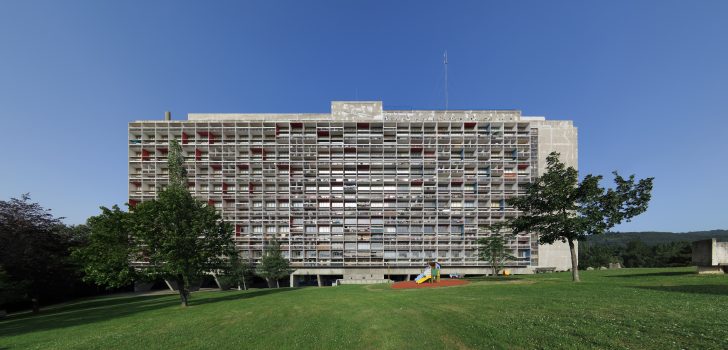
Despite its functionalist name, his first “Unité d’habitation de grandeur conforme” (or: “housing unit of standard size”) was designed to start an inspiring new chapter in urban planning. “Any architect who does not find this building beautiful had better lay down his pencil,” said Walter Gropius of the Bauhaus at its opening ceremony in Marseille.
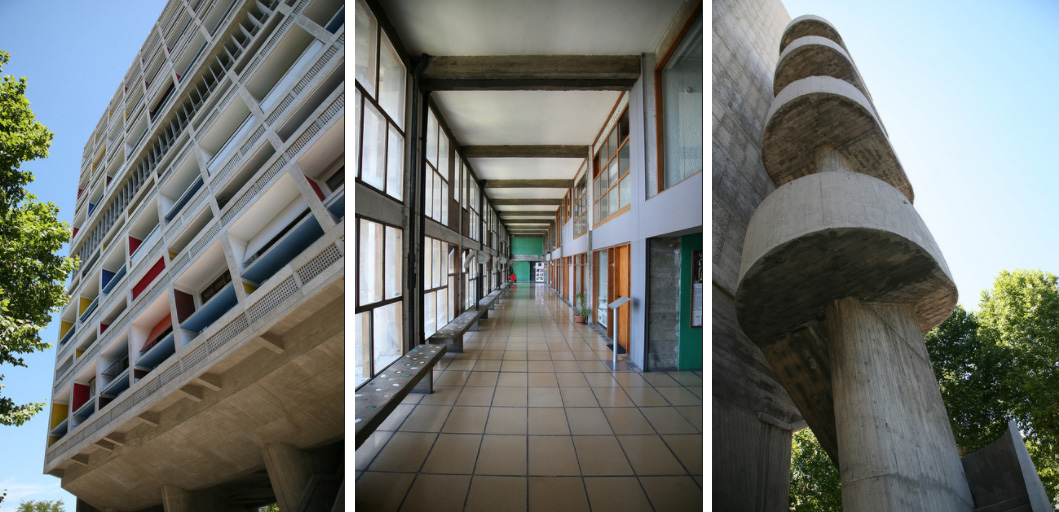
Constructed in the late 1940s and early 50s, aspects of the building’s structure reflected Corbu’s Five Points of Architecture — a set of strategies he had previously applied to smaller domestic projects.
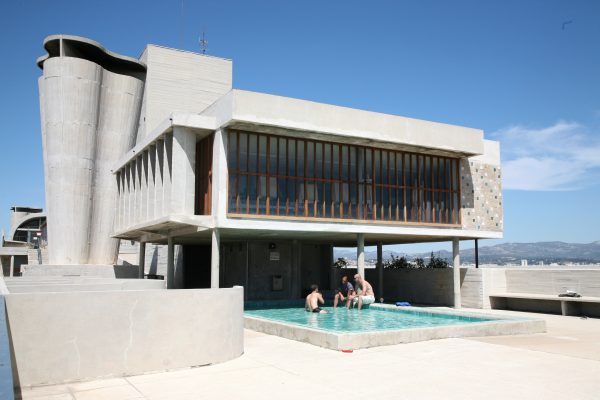
The new Cité Radieuse was lifted off the ground on columns and built as a modular framework into which units were inserted. A school and pool for children were set on the roof, along with sculptural ventilation towers reminiscent of ocean liner smokestacks (a nod to the modern Machine Age). Apart from that, some wood patterns ingrained in the board-formed concrete and color, ornamentation is relatively absent.

In terms of its program, the building was organized to be a sort of self-contained city. It featured commercial and institutional functions between and above housing levels to serve the residential community.

Residences were stacked and wrapped around shared corridors, allowing each unit to extend from one side of the building to the other for maximum sunlight. This also minimized wasted hallway space, since only one access passage was required for each set of three living levels.
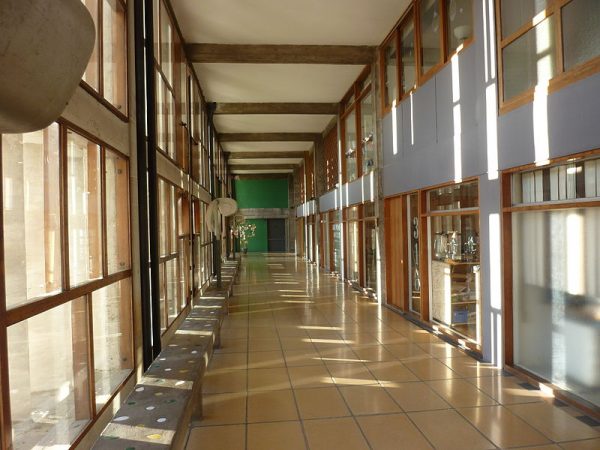
Every fourth floor, taller and wider hallways housed shops, restaurants, schools and recreational facilities for the structure’s 1600 residents. Many buildings are driven by floor-to-floor plans, but this strategy is fundamentally sectional — it is about verticals, not just horizontals.

While not as free to form space as he might have been in a conventional house, Corbu carried his modular ideals into individual units as best he could. He offered residents 23 different layouts and an array of custom Modernist furniture, furnishings and fixtures — people could also pick out their own color schemes. In theory, over time, other similar adjacent structures could be built and connected by skyways.
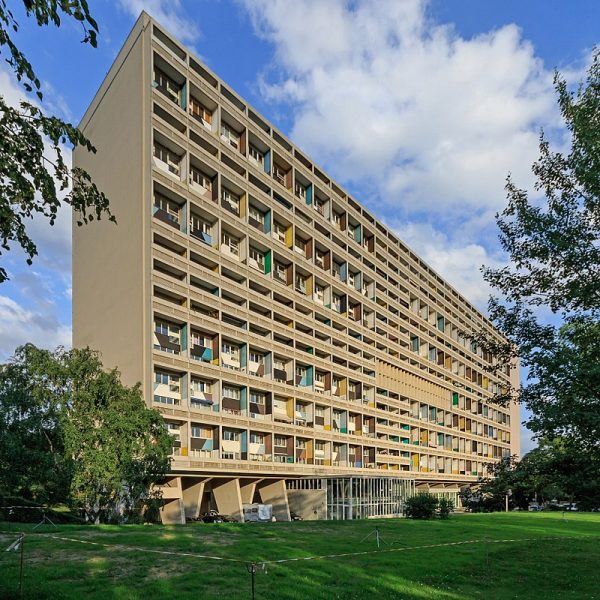
For Corbu, the project was a turning point — it opened the door to more large-scale opportunities around the world, including a series of additional Unité structures that would come to be built around Europe.
He dubbed this first one Cité Radieuse after his earlier (unrealized) vision of a Radiant City. Locals in Marseille, however, sometimes refer to it as “La Maison du Fada” (meaning: The Nutter’s House).
For better or worse, these vertical micro-cities became an inspiration for architects and planners around the world in the decades that followed, including Brutalist designers. Indeed, that subsequent movement got its name from the French word for “raw” — Corbu described his choice of material as béton brut, meaning raw concrete.



Comments (2)
Share
The building has a hotel, which is your only way to visit the building itself, and observe the inside details first hand (and have access to the roof terrace).
If you’re in Paris, you can visit at the Cité de l’Architecture close to the Tour Eiffel an ‘excerpt’ of the Cité Radieuse featuring a piece of hallway and a full flat. You’ll be able to sense to which extend this building architecture can offer comfort and harmony… and be puzzeled thinking about how the heck could this paradise serve as a craddle to so many suburbian hells!